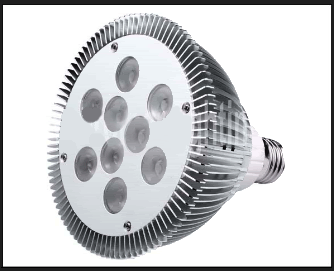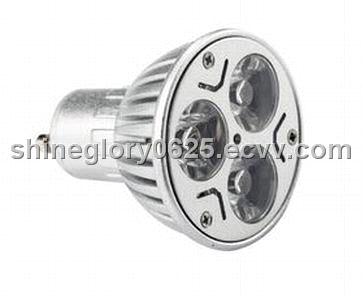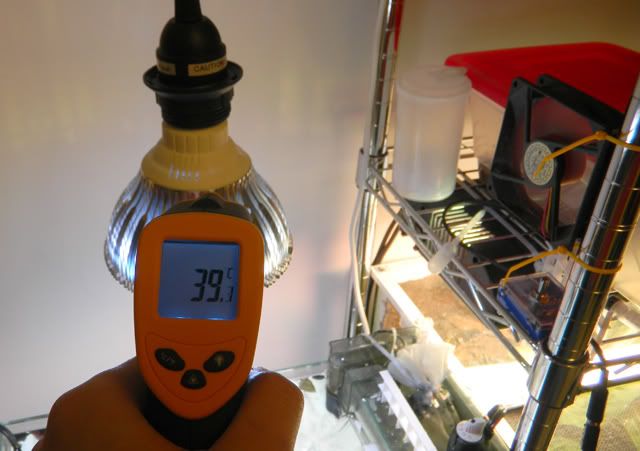
 |
|
#41
|
|||||
|
|||||
|
Quote:
 These 3W crees are enclosed in an aluminum housing which is supposed to keep them cool enough so they don't require fans. It's 3D inductive cooling as appose to just one sided but still a basic design. If fins were added to increase surface area and each unit was mounted to an additional heat sink I would bet the LEDs would run cooler than the fan cooled units currently available and those built by DIY'ers.  Also they make high powered LEDs for various residential applications including pretty much every light bulb standard available, none use fans.   Spotlights http://www.udmdjstore.co.uk/category...ategoryID=2578 http://www.alibaba.com/product-gs/26...tdoor_LED.html I could go on but I really do have better things to do these days. As for computers my point was the CPUs run much hotter and it's commodity market and therefore not really compatible to the LEDs, that's all. I'm not here to debate anything on the subject of computer quality or price. Last edited by sphelps; 04-21-2010 at 12:02 AM. |
|
#42
|
|||||
|
|||||
|
Quote:
Steve
__________________
 *everything said above is just my opinion, and may or may not reflect the views of this BBS, its Operators, and its Members. If cornered on any “opinion” I post I will totally deny having ever said this in a Court of Law…Unless I am the right one* *everything said above is just my opinion, and may or may not reflect the views of this BBS, its Operators, and its Members. If cornered on any “opinion” I post I will totally deny having ever said this in a Court of Law…Unless I am the right one*Some strive to be perfect.... I just strive. |
|
#43
|
|||||
|
|||||
|
Also, have you handled one of those spotlights? They are much heavier than a standard spotlight bulb, So it goes back to weight and size. Scale that up to a full array and you end up with a large heavy heatsink if you want to go without fans.
Like it or not,if you want to run a larger array of 3W LEDs at or near full power without having a 50 pound light fixture you need fans. |
|
#44
|
|||||
|
|||||
|
Quote:
http://starwire-led.en.made-in-china...GU10-C3W-.html Also you could use a peltier system and regulate the current with a simple thermo switch so the surface stays at a consistent temperature just like fans so condensation would be no different. As long as the surface temperature stays at or above ambient you won't get condensation. The bottom line is many high powered systems already exist which don't use fans so it can be done and it can still be done better. I'm not sure why you all feel the need to debate that, if you like fans go nuts but I'd prefer a system without fans. It's a simple personal preference I guess, and I'm entitled to it. Last edited by sphelps; 04-21-2010 at 05:53 PM. |
|
#45
|
|||||
|
|||||
|
Quote:
Keep thinking that if you want but you don't have to add more weight to increase heat sink efficiency. Applying individual finned heat sinks to each LED will not add significant weight and reduce the the need for an additional large heat sink. You could very easily decrease the weight of the fixture with proper design. LEDs don't generate a lot of heat, they are at least 90% efficient meaning a 3W bulb can't produce more than 0.3W of heat which is very little. The reason you need fans is because you're simply bolting one side of the of it to a large aluminum plate which isn't a very efficient way to remove the heat. Last edited by sphelps; 04-21-2010 at 06:37 PM. |
|
#46
|
|||||
|
|||||
|
Like Ron has already pointed out, these lights alone, weight about 1- 1.5bs Also these lights run at a temperature of roughly 50C, the whole debate about whether or not we need fans for the fixtures was the debate on how efficiently the heatsinks alone can dissipate the heat to keep the temperature as low as possible. At 50C the LEDs will surely work close to there rated 50,000hrs life time. But the decrease in intensity will be larger over the course of the bulbs overall life.
Quote:
again the debate on whether or not fans were needed started based on the idea of keeping the heatsinks as cool as possible. But a system without fans will work, just not as efficient as those that has active cooling, as you'll most likely see an increase in intensity drop through the life of the emitters. Quote:
Maybe we'll see a fixture out there in the future that will be fanless and be able to keep the temperature at 30-40C, when that day comes i'll purchase one to test and throw a fan on top to increase the lifespan of my LEDs
__________________
Eugene |
|
#47
|
|||||
|
|||||
|
Quote:
I will agree that there is the ability to create a heat sink that could keep temps down to 40 degrees but it would be in a controled enviorment. the problem I have with Passive cooling is that there is so much requirement for "space" around the fixture so the heat has some place to disapate to. so you would have restrictions ie. no use in a closed canopy, must be so far away from surfaces to ensure good air movement around it. must be used under a specific ambiant temp, and possibly must be used in low humidity unless some other means of suplementry air flow is provided. Just like the spot bulbs that are being sold now, if the air access to them is restricted in any way they burn out as they found when people were using them in closed fixtures. the problem with high humidity is it can actualy form an insulation barrier around the heat sink preventing cooler air from getting in contact to adsorb the heat efficently. so many factors involved, and you guys are making me have to remember all my coursing in theromal dynamics which hurts my head you don't need much air flow, and if done right you will never hear the fans. by using the fans you can get away with larger spacing of the fins on the heat sink and also use shorter fins, reducing the hight and weight of the fixture. now I will be playing around to insure that even with out the fans I stay under 75 degrees in an operating enviorment, and I will be incorperating a shut down feature into the micro controler which will shut off every second LED to reduce the amount of heat going into the sink and enable it to cool its self off. if the heat still goes up it will shut off all lighting. I am aiming to have the fist stage kick in at 45 degrees and the second at 50. I am also toying with the idea of fan redundency so therte is another set of fans on the heat sink that only come on if the system hits a specific temp. now the temps I have listed are just off the top of my head, maybe the secondary fans will come on at 45 and everything else will be bassed off that, still have to play and figure out what I think will work the best. Steve
__________________
 *everything said above is just my opinion, and may or may not reflect the views of this BBS, its Operators, and its Members. If cornered on any “opinion” I post I will totally deny having ever said this in a Court of Law…Unless I am the right one* *everything said above is just my opinion, and may or may not reflect the views of this BBS, its Operators, and its Members. If cornered on any “opinion” I post I will totally deny having ever said this in a Court of Law…Unless I am the right one*Some strive to be perfect.... I just strive. |
|
#48
|
|||||
|
|||||
|
Quote:
I agree with you that it would be nice to have a silent system, but in the long run i just dont know if its worth it, i mean we can get more life/intensity out of the LEDs if they were active cooled than passively cooled so why not do so and gain an extra few years more out of them. You've got some good points there Steve, it'll be interesting to see your project on the LEDs too
__________________
Eugene Last edited by OceanicCorals-Eugene-; 04-22-2010 at 12:35 AM. |
|
#49
|
||||
|
||||
|
i thought i might put this on
Normal running temp for the CooLED at room temp of 23 C is about 50~55C just by simply adding a computer fan to help heat dissipate, the temp is down to around 37~39  Pic here you can see the fan and the light operation. The heat sink, pluse a little bit of active cooling decrease the running temp but a lot . ~~ |
|
#50
|
||||
|
||||
|
Here is a recent quick review of the LED Aqua Illumination module. Note the PAR comparison. http://reeftools.com/news/aqua-illum...ar-led-system/ Last edited by OceanicCorals-Ian-; 04-24-2010 at 03:51 PM. |